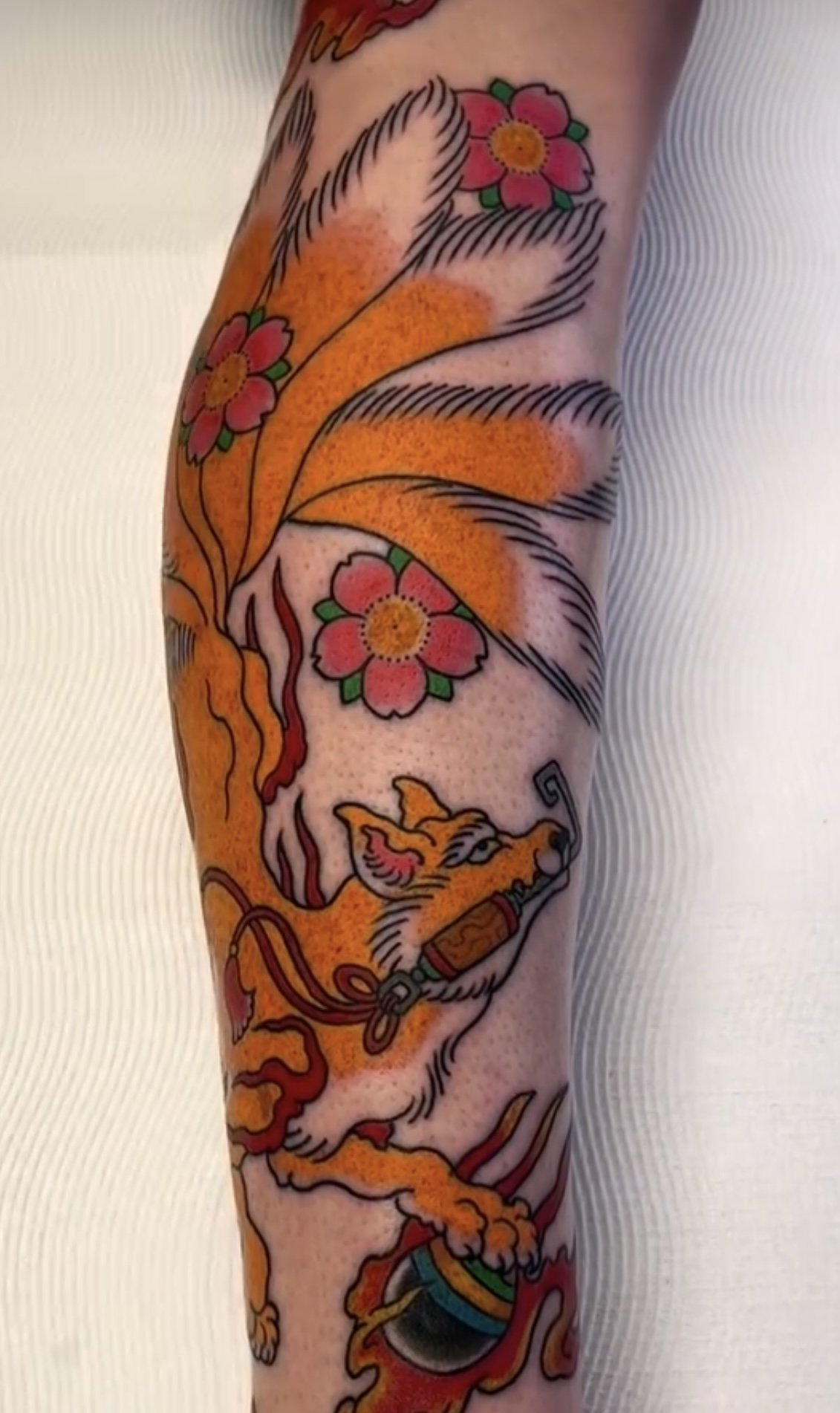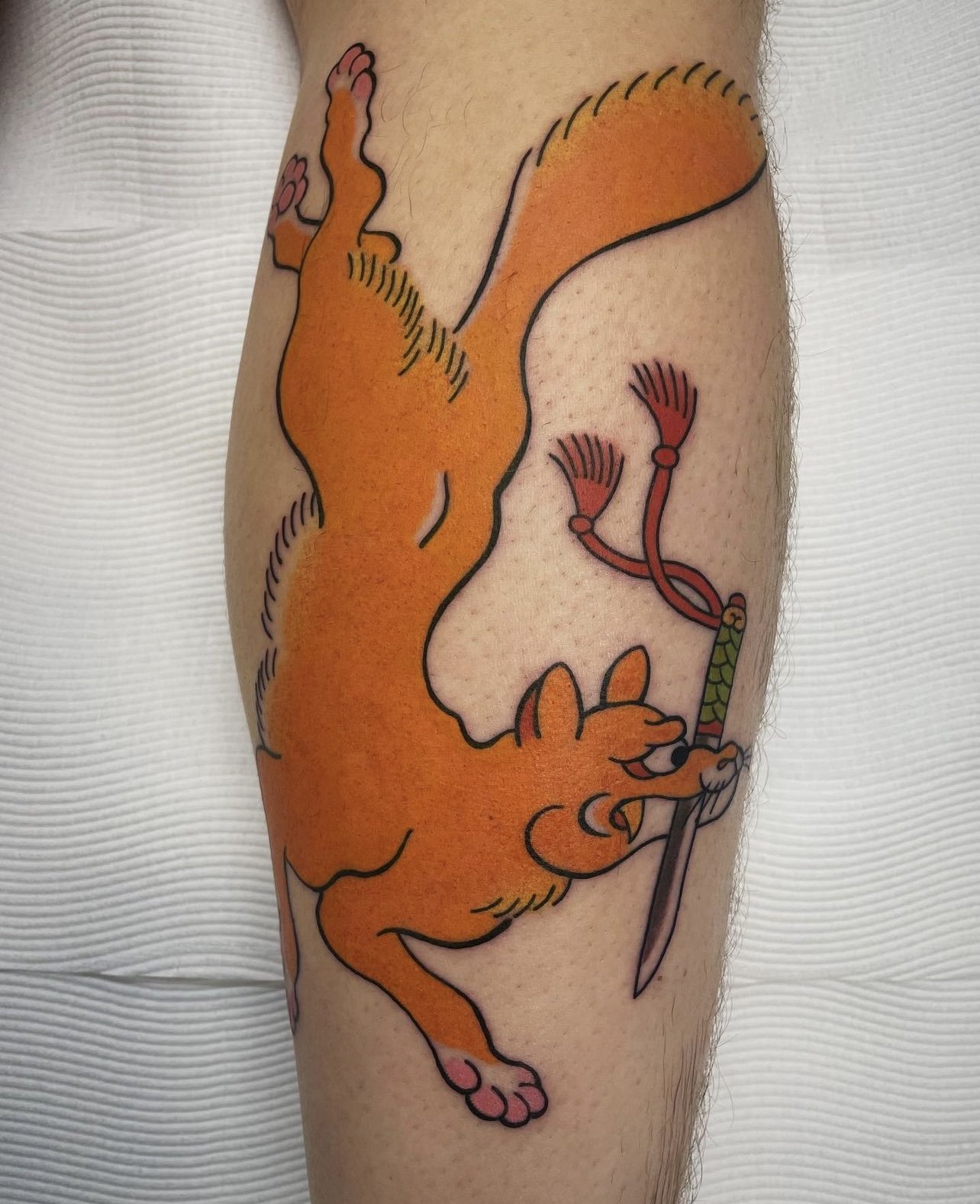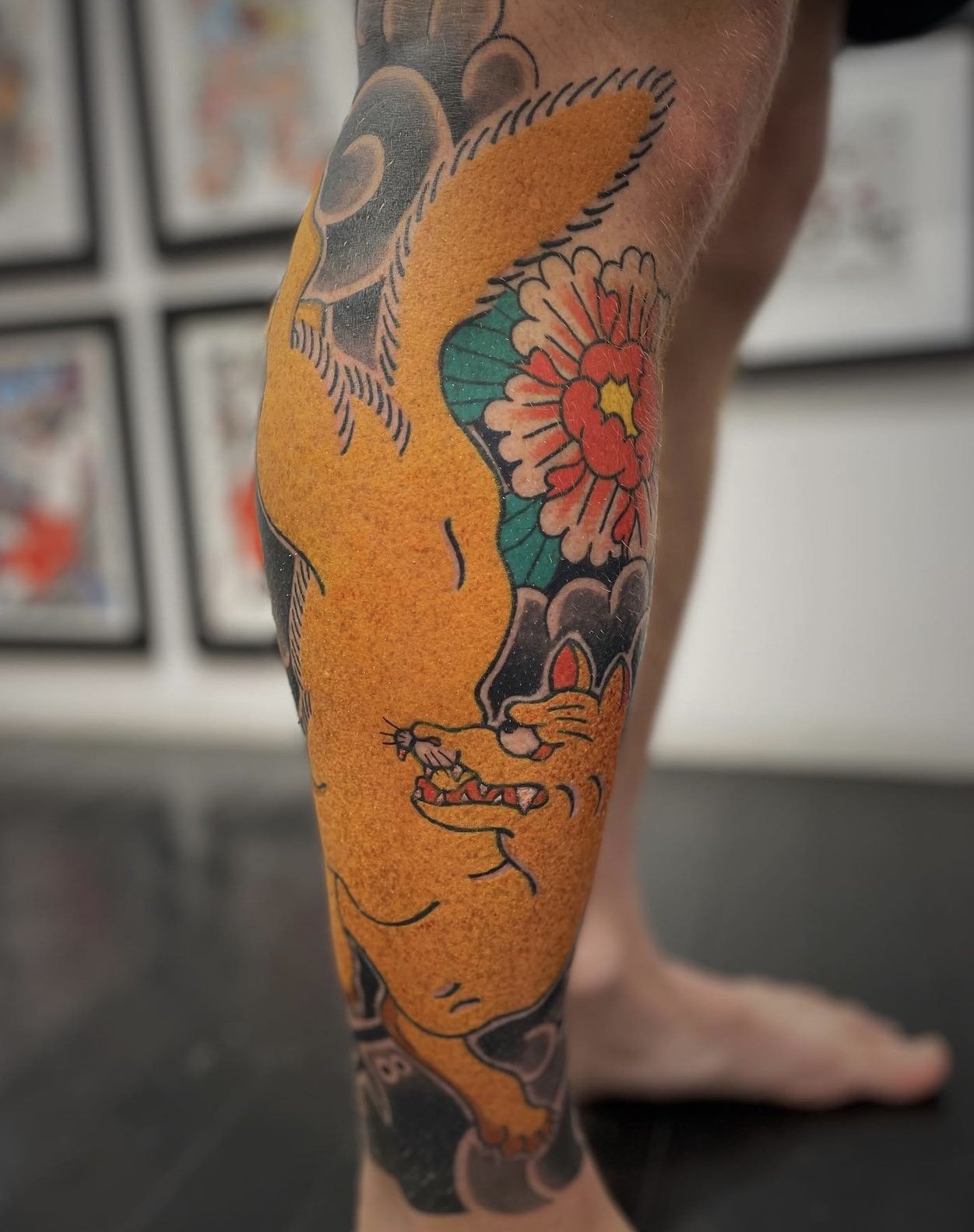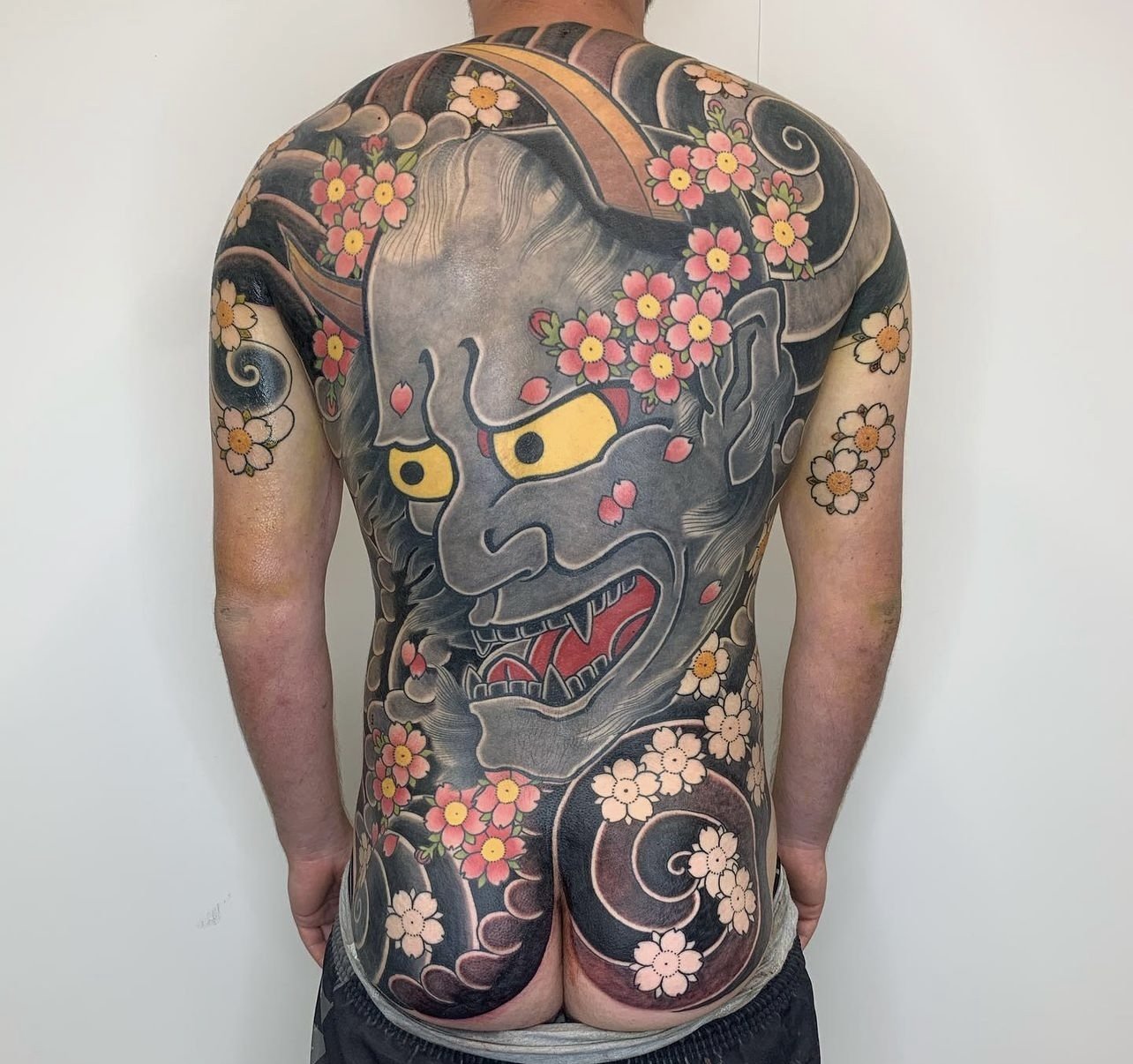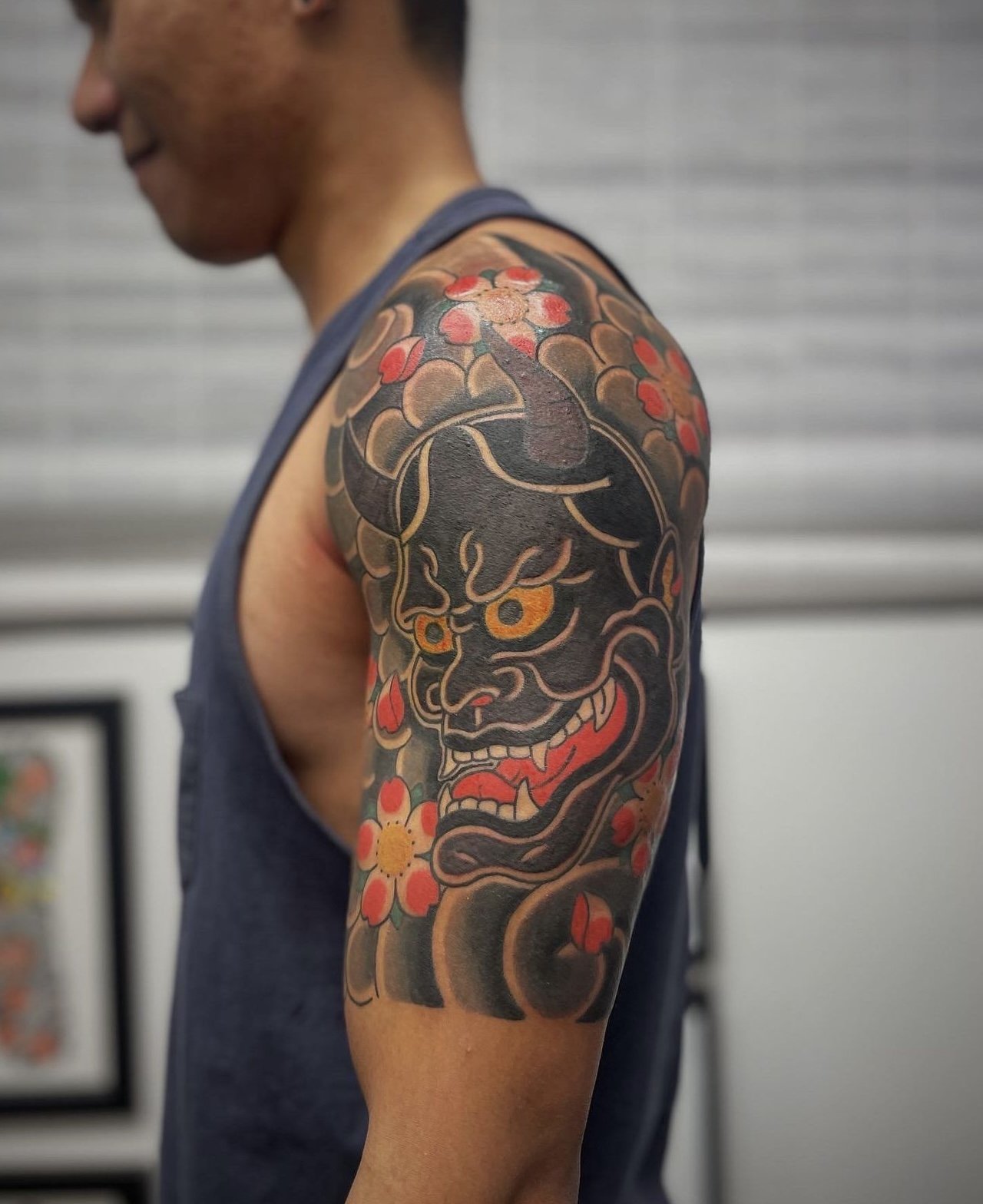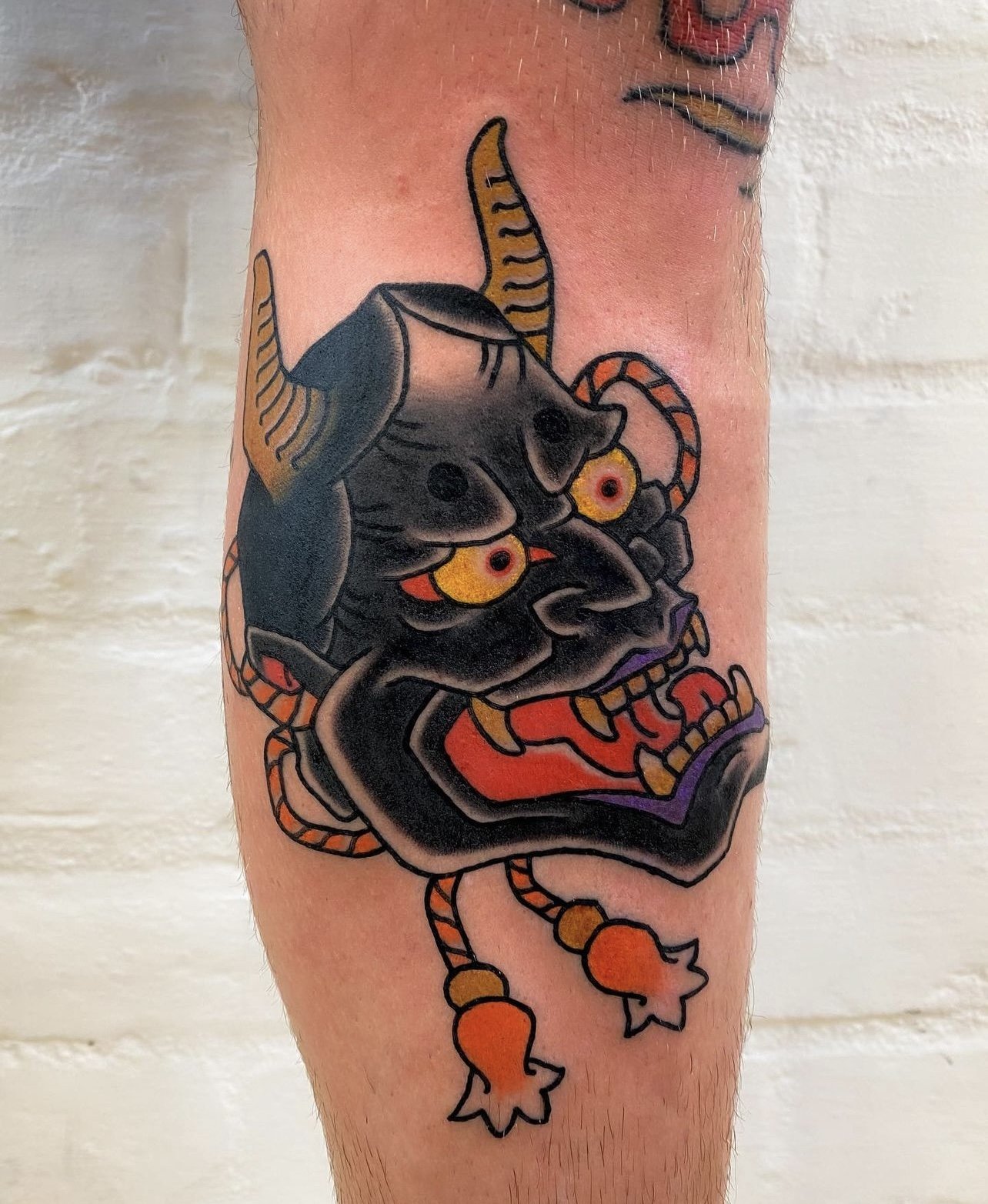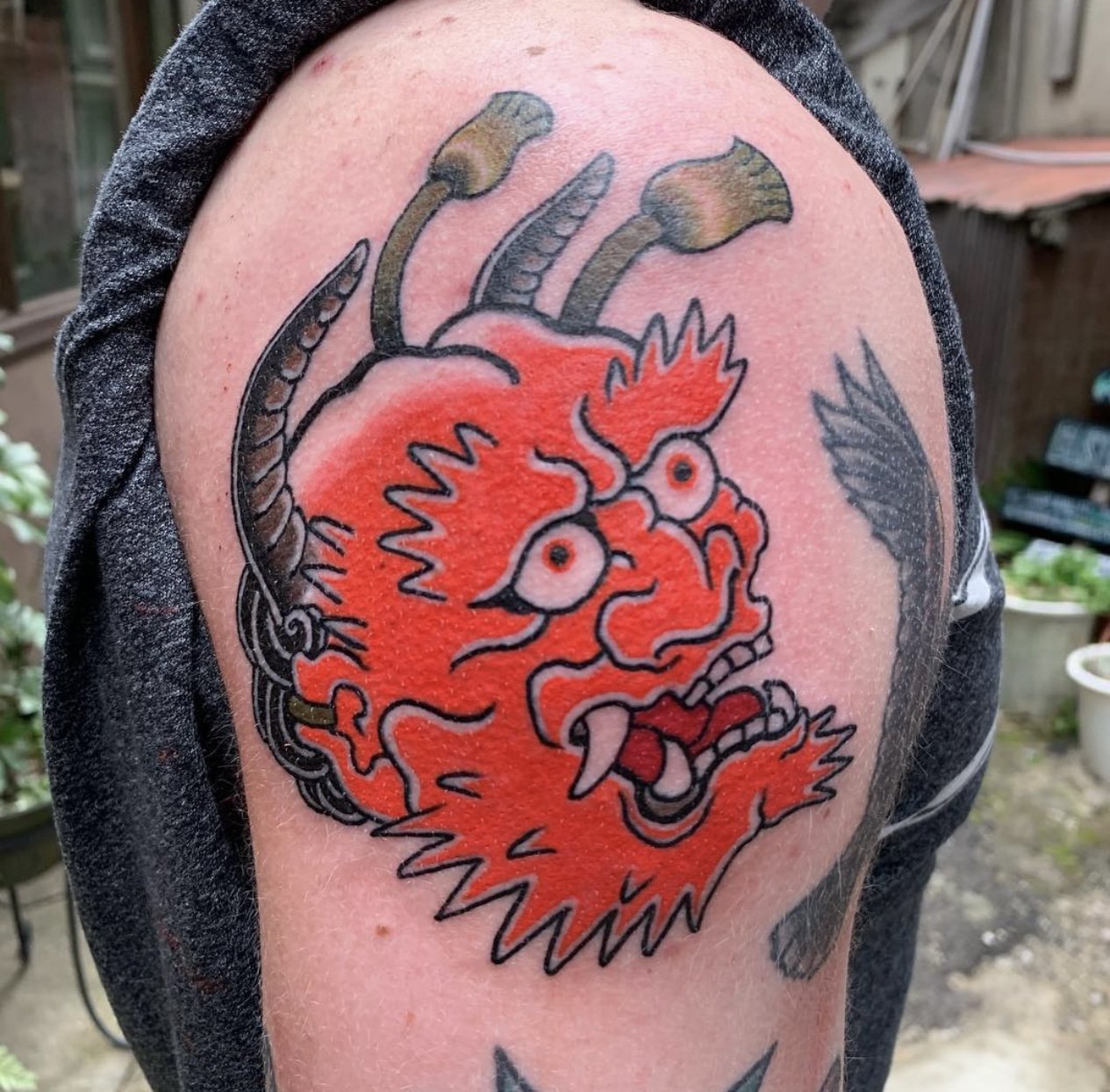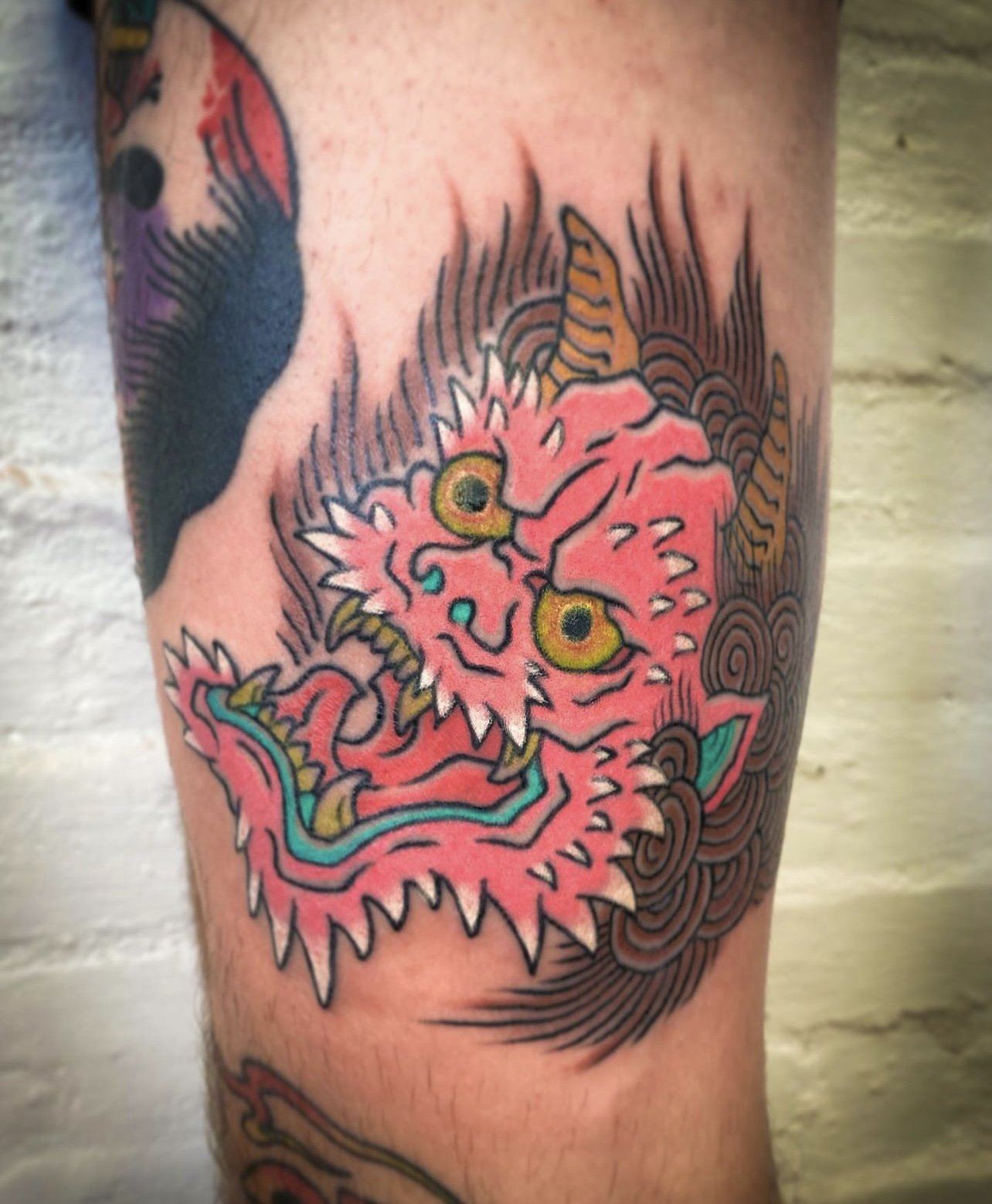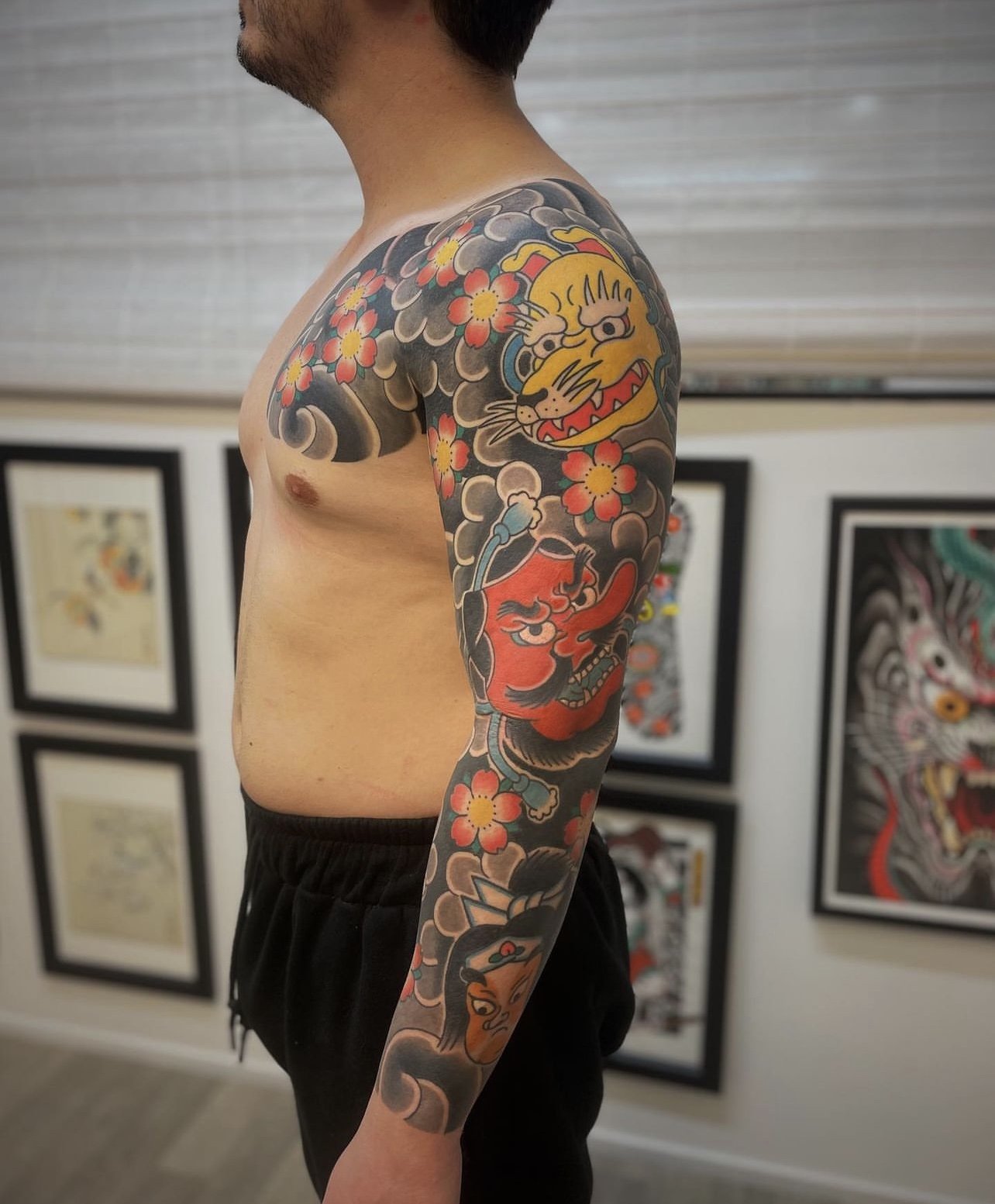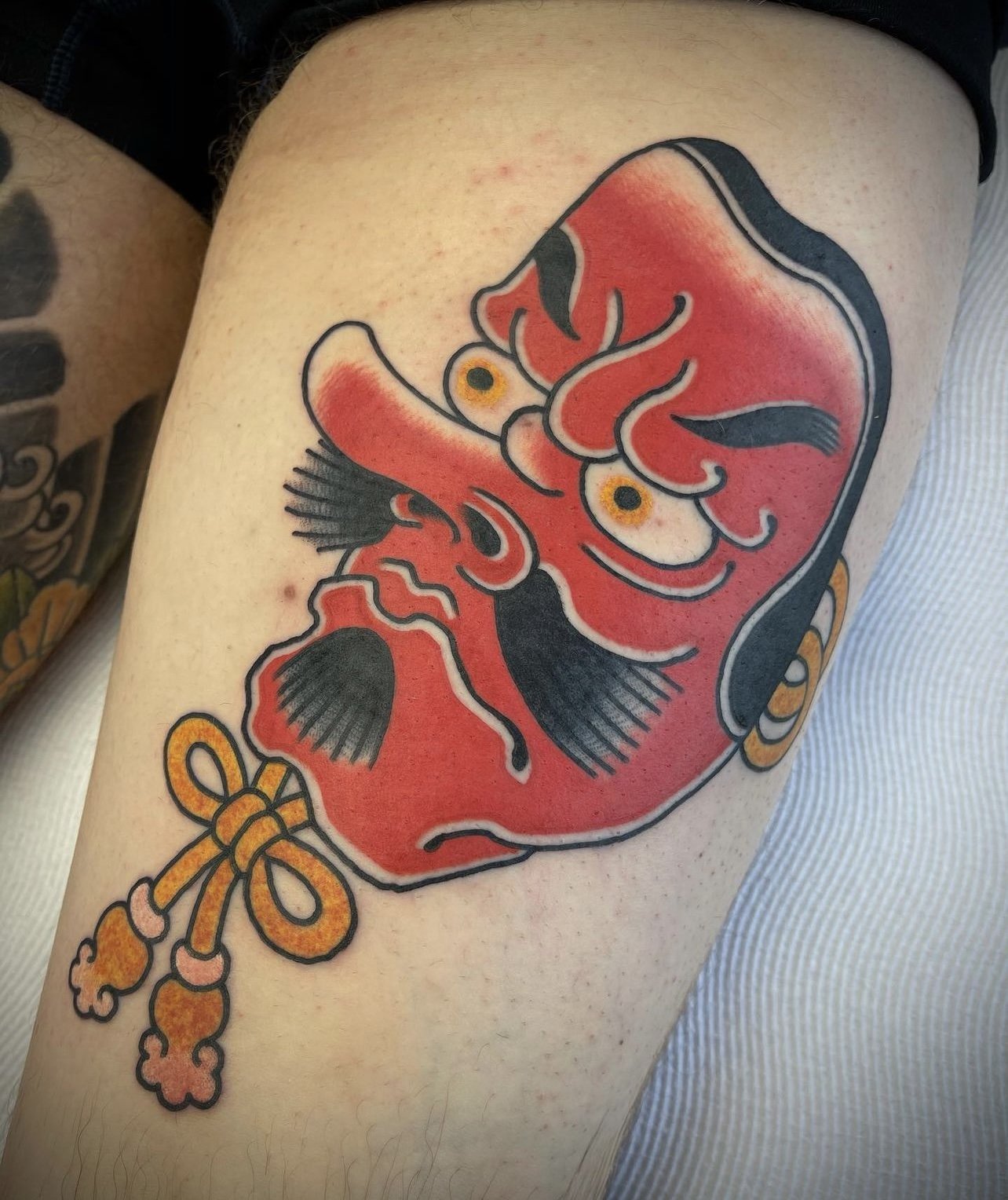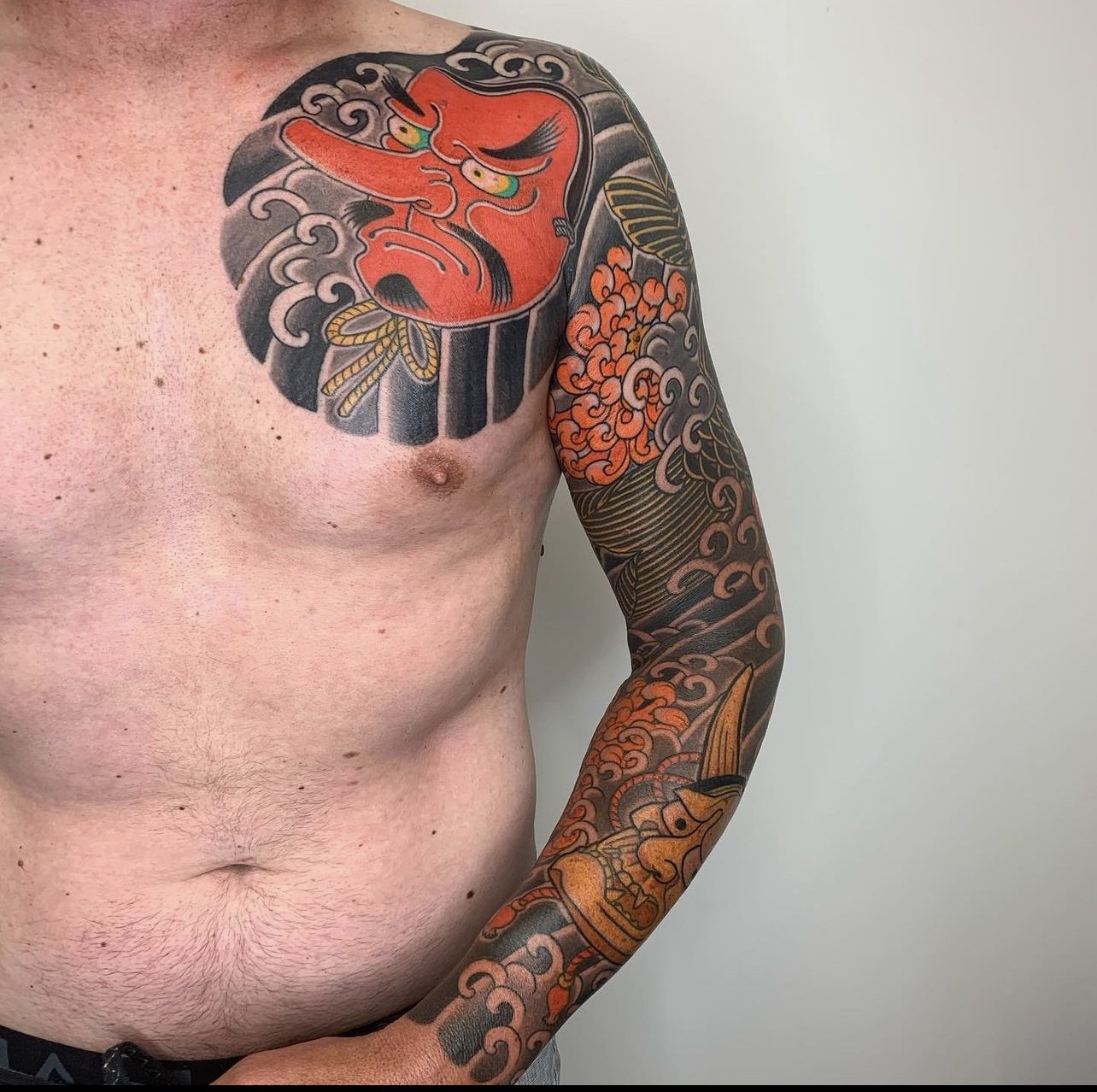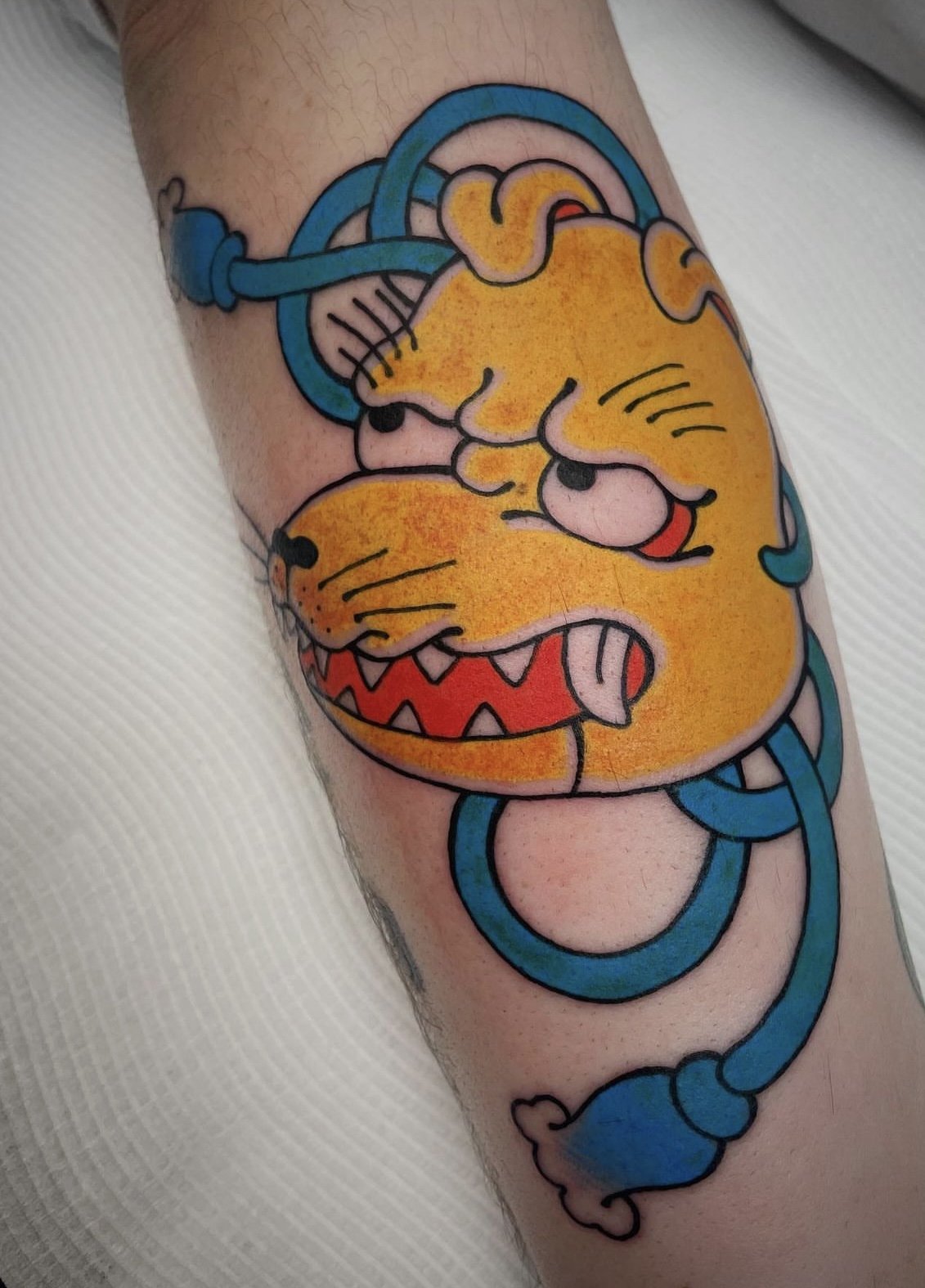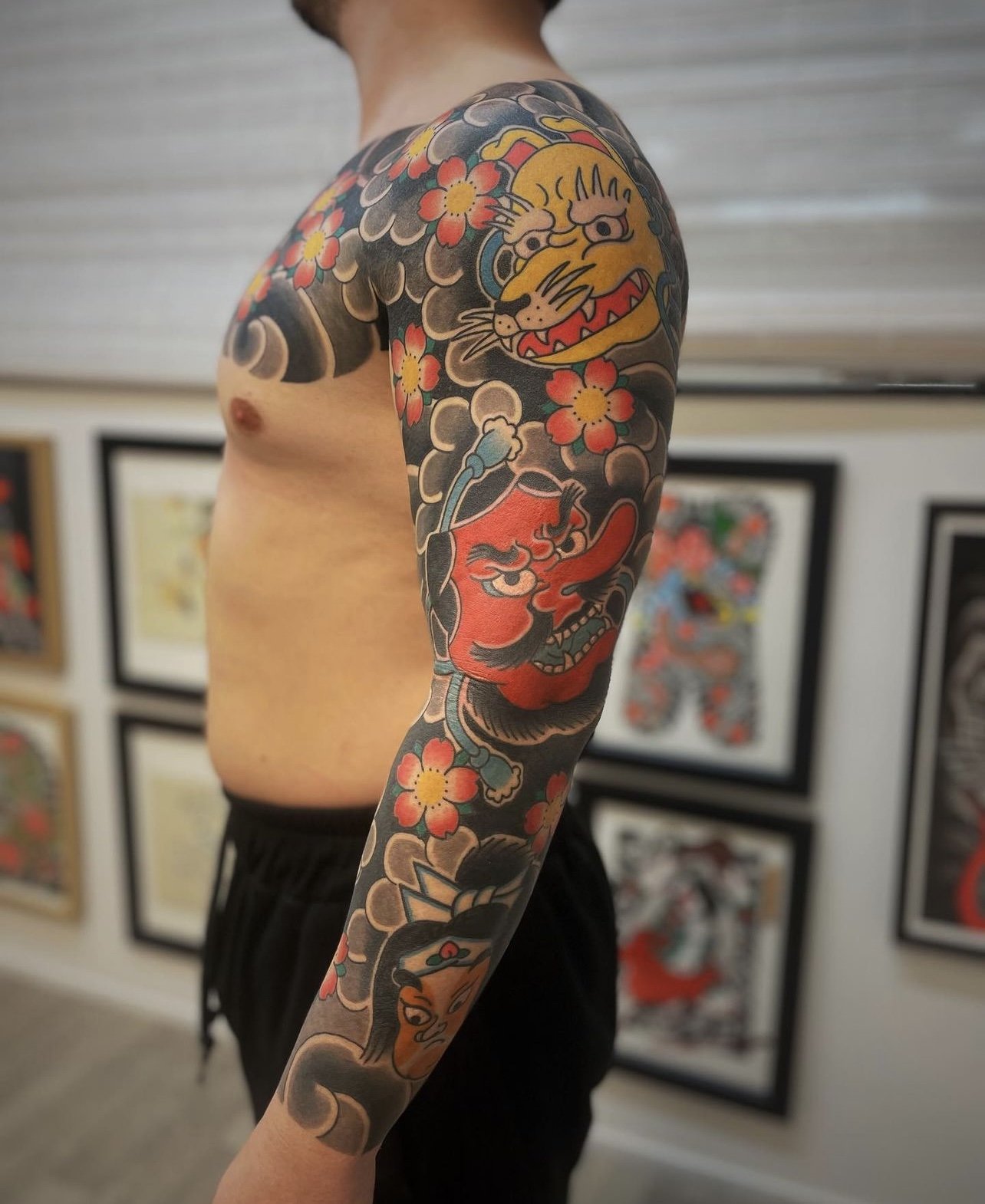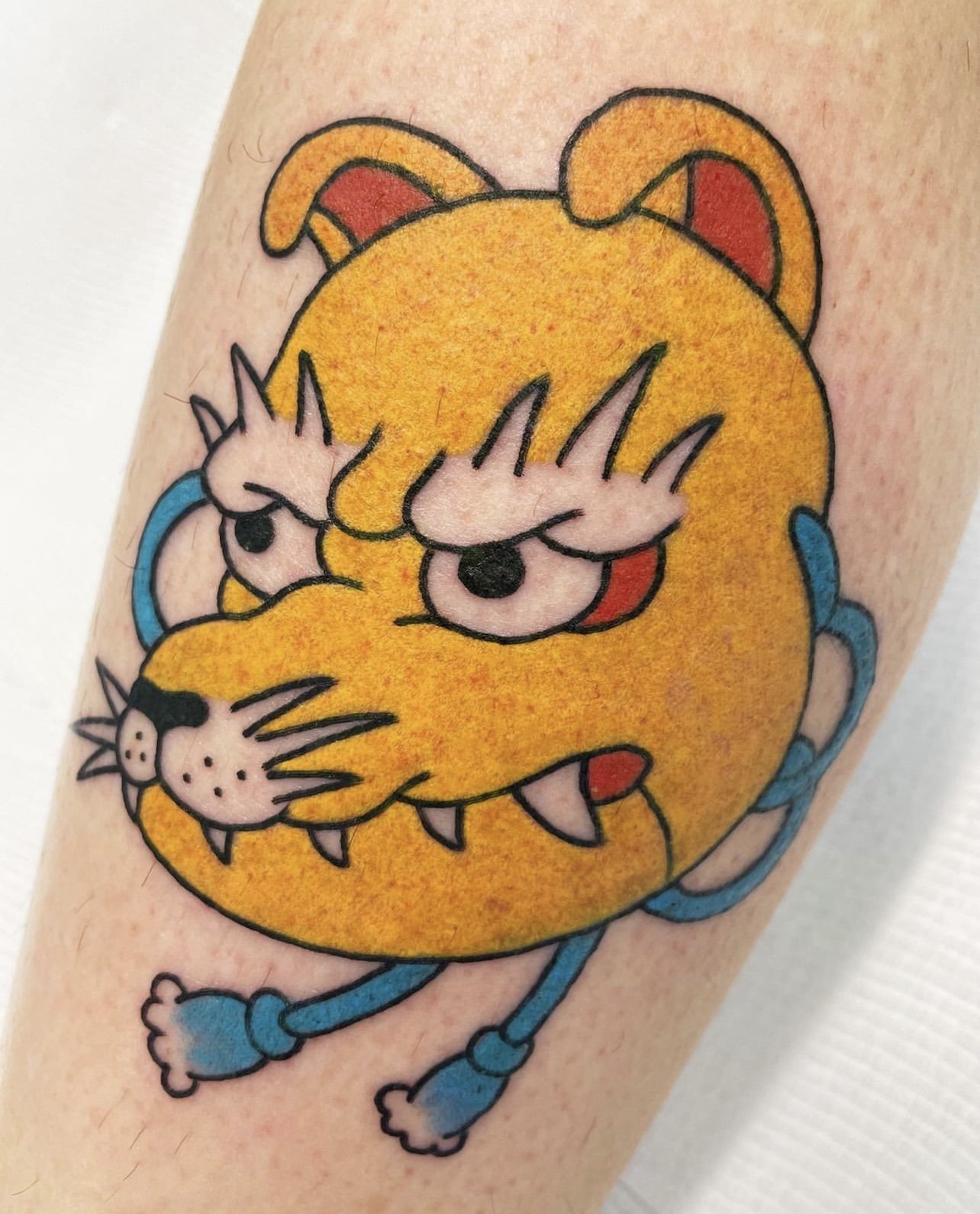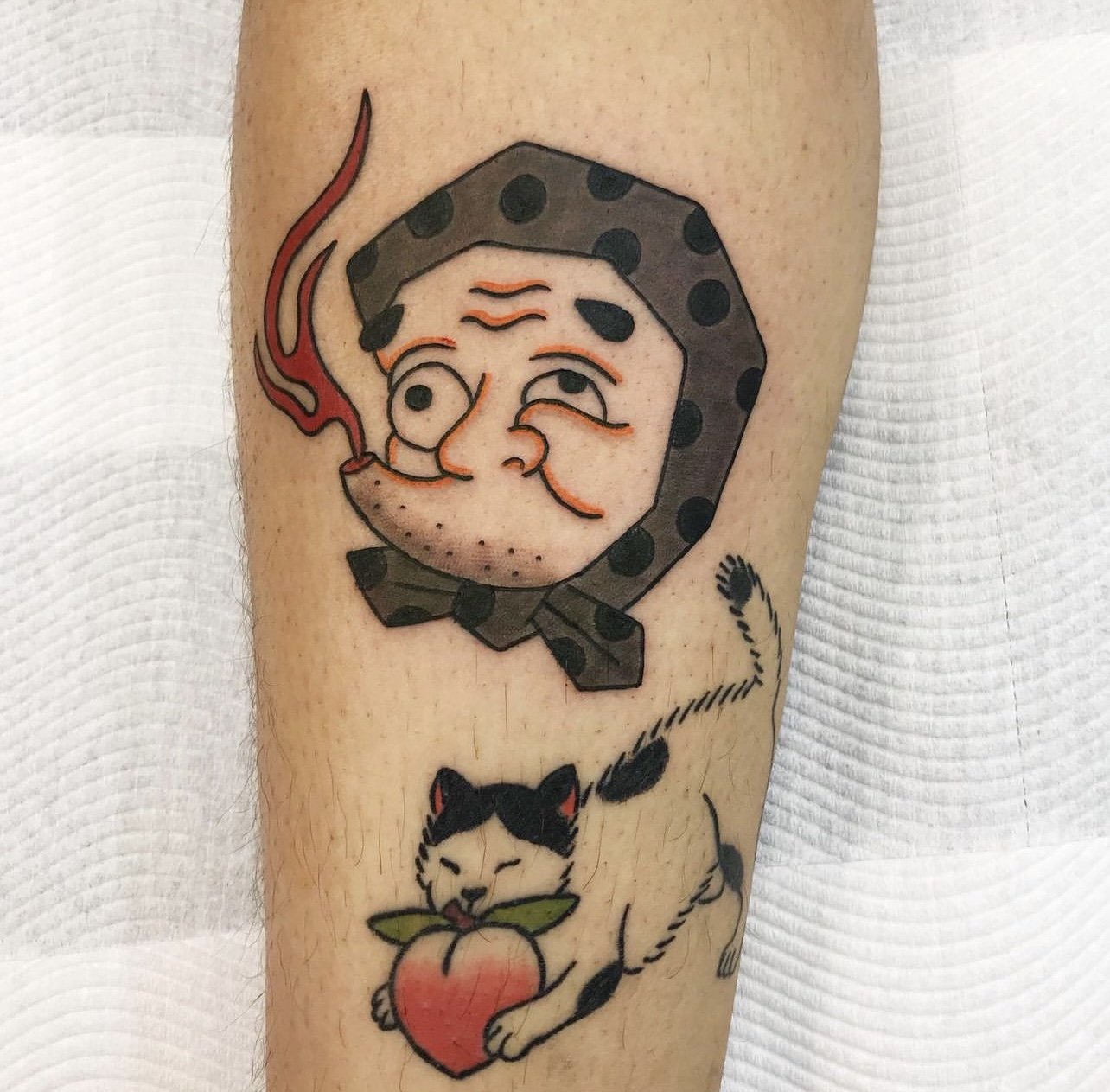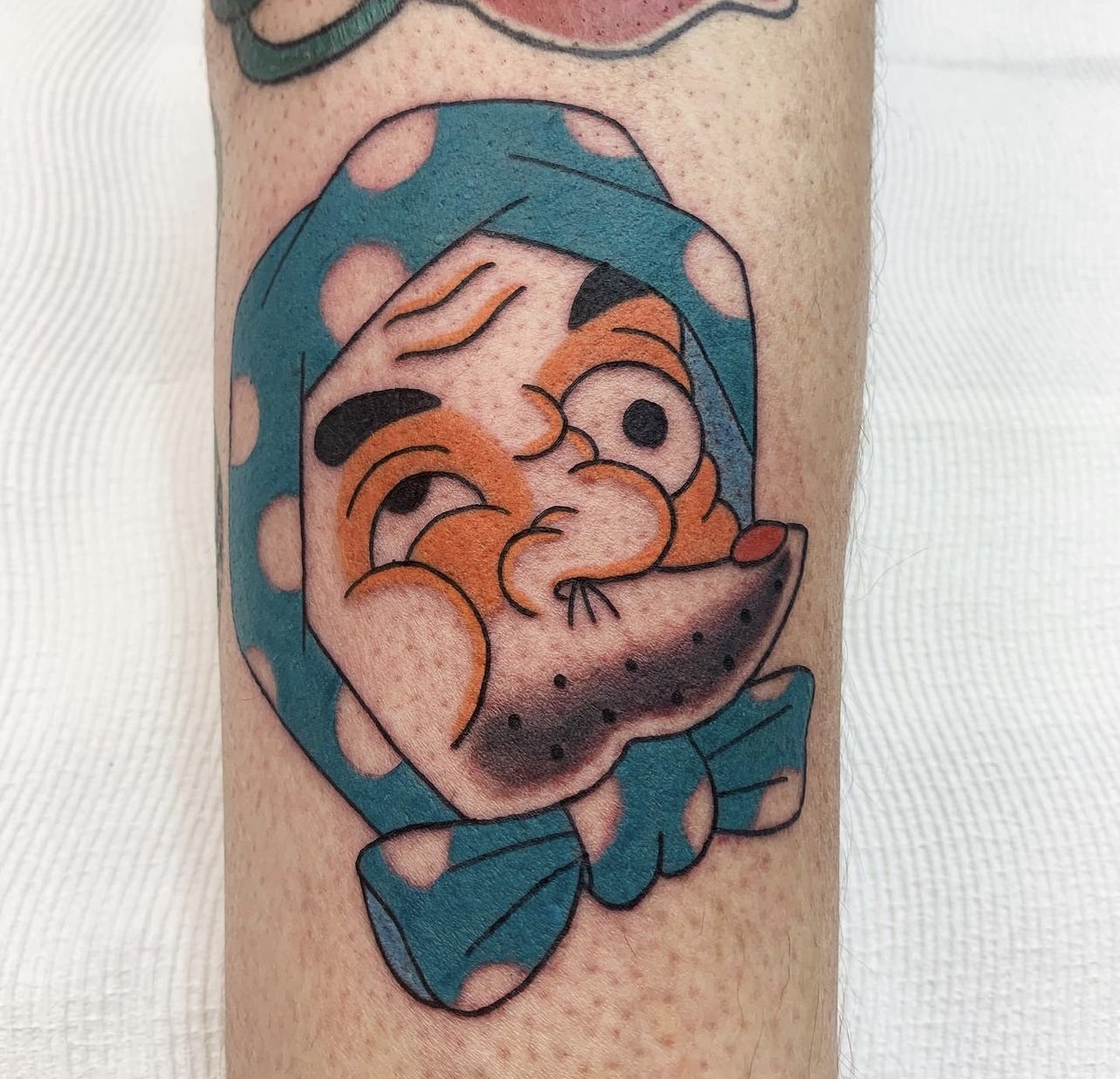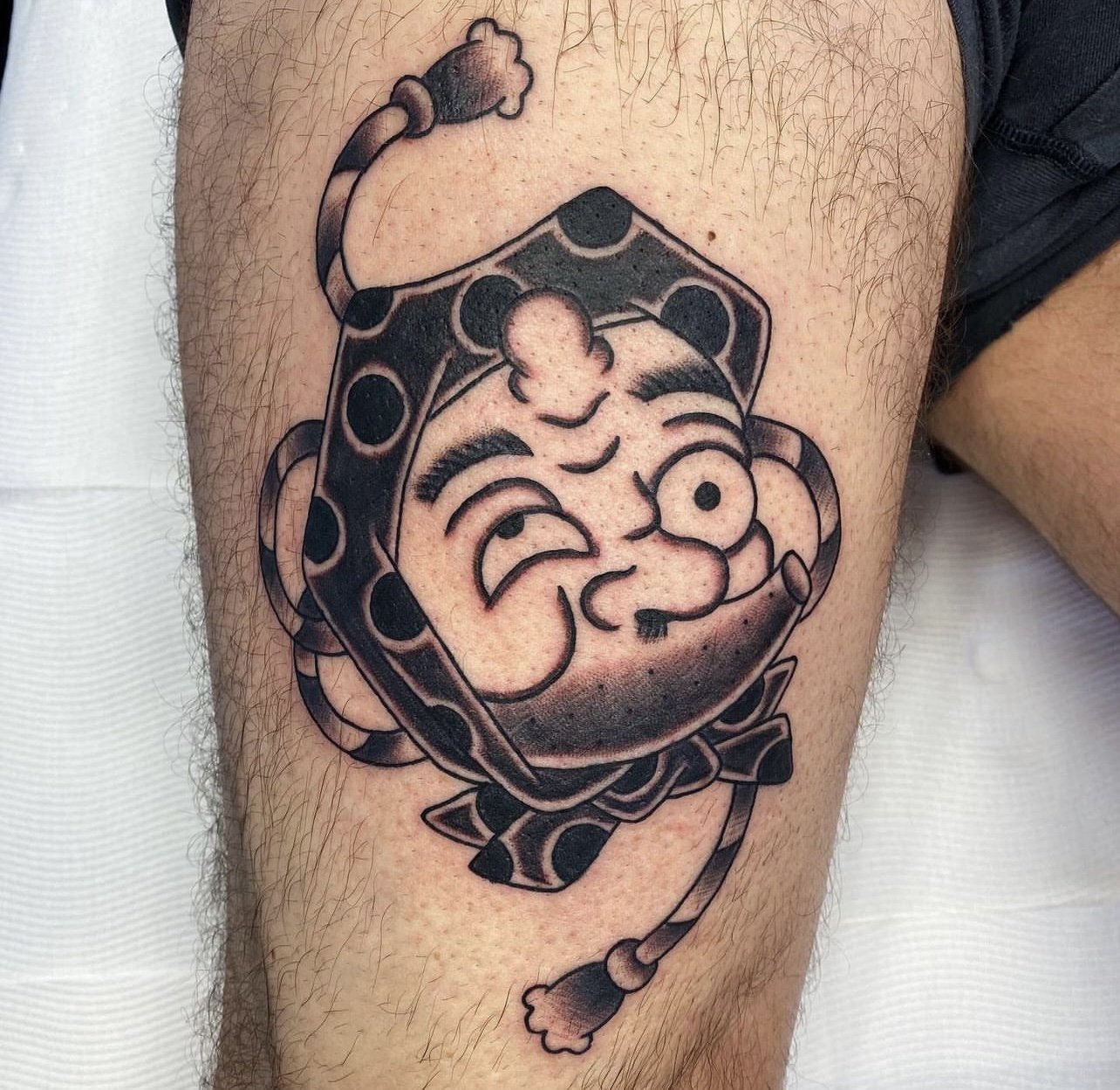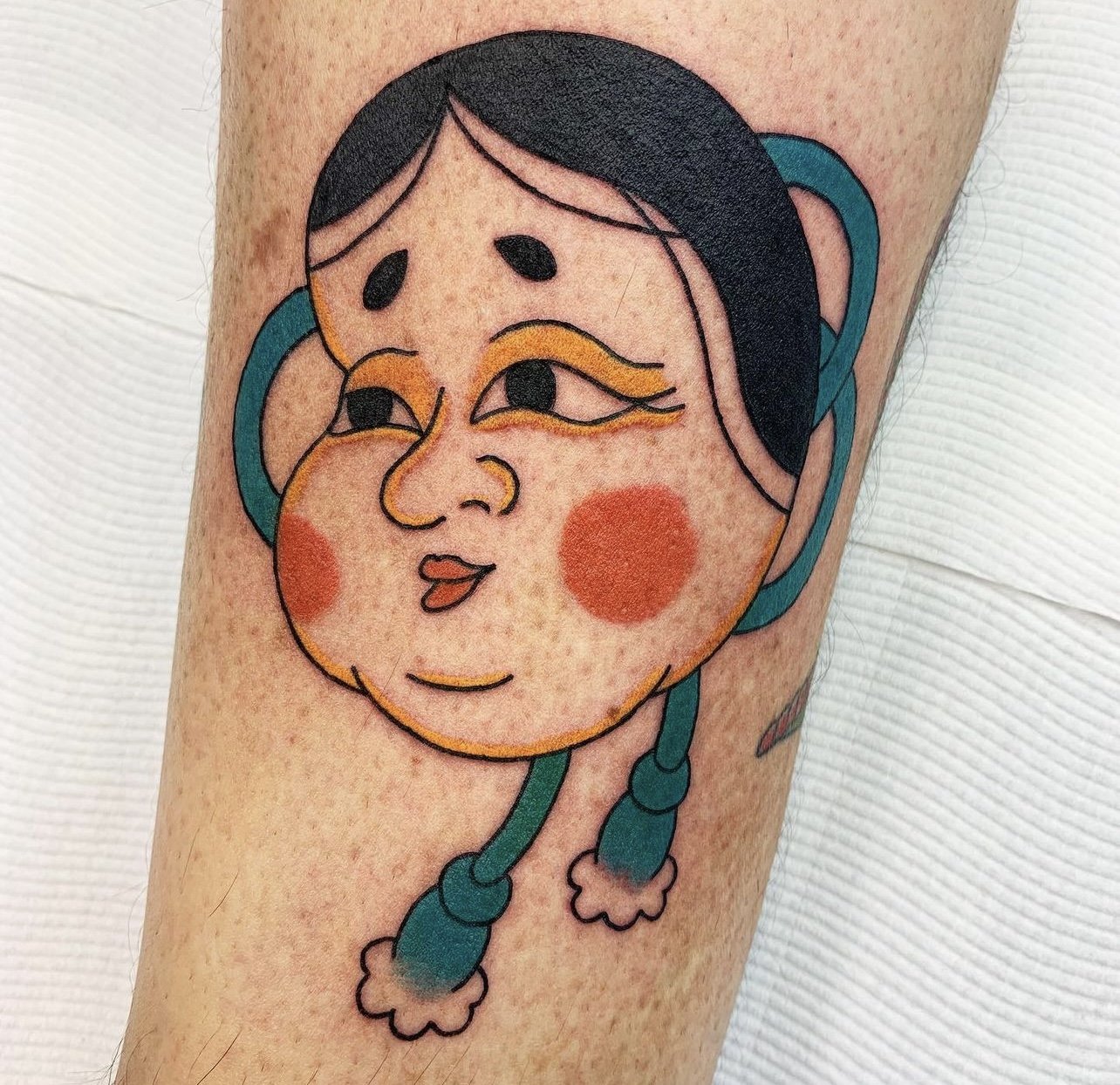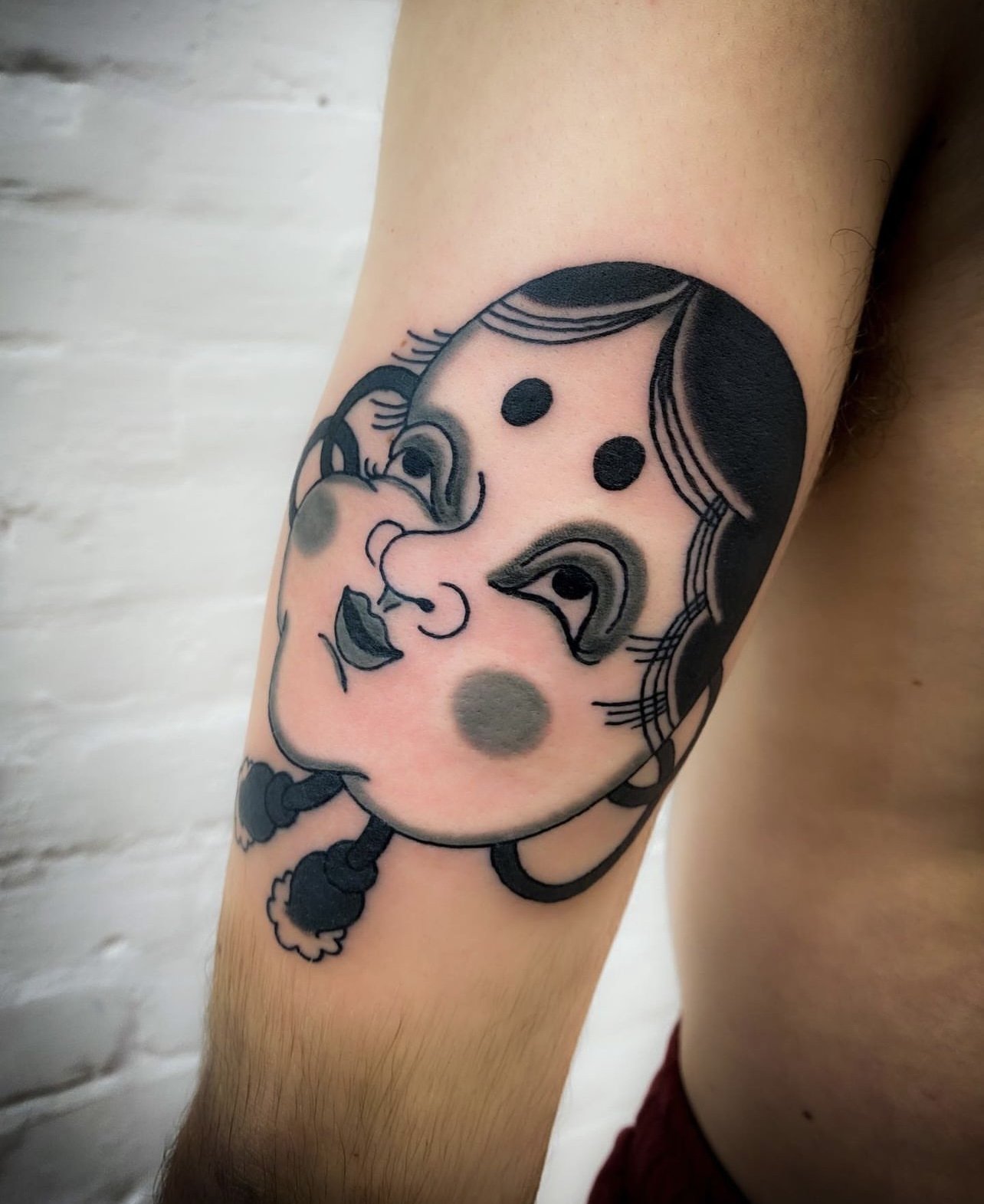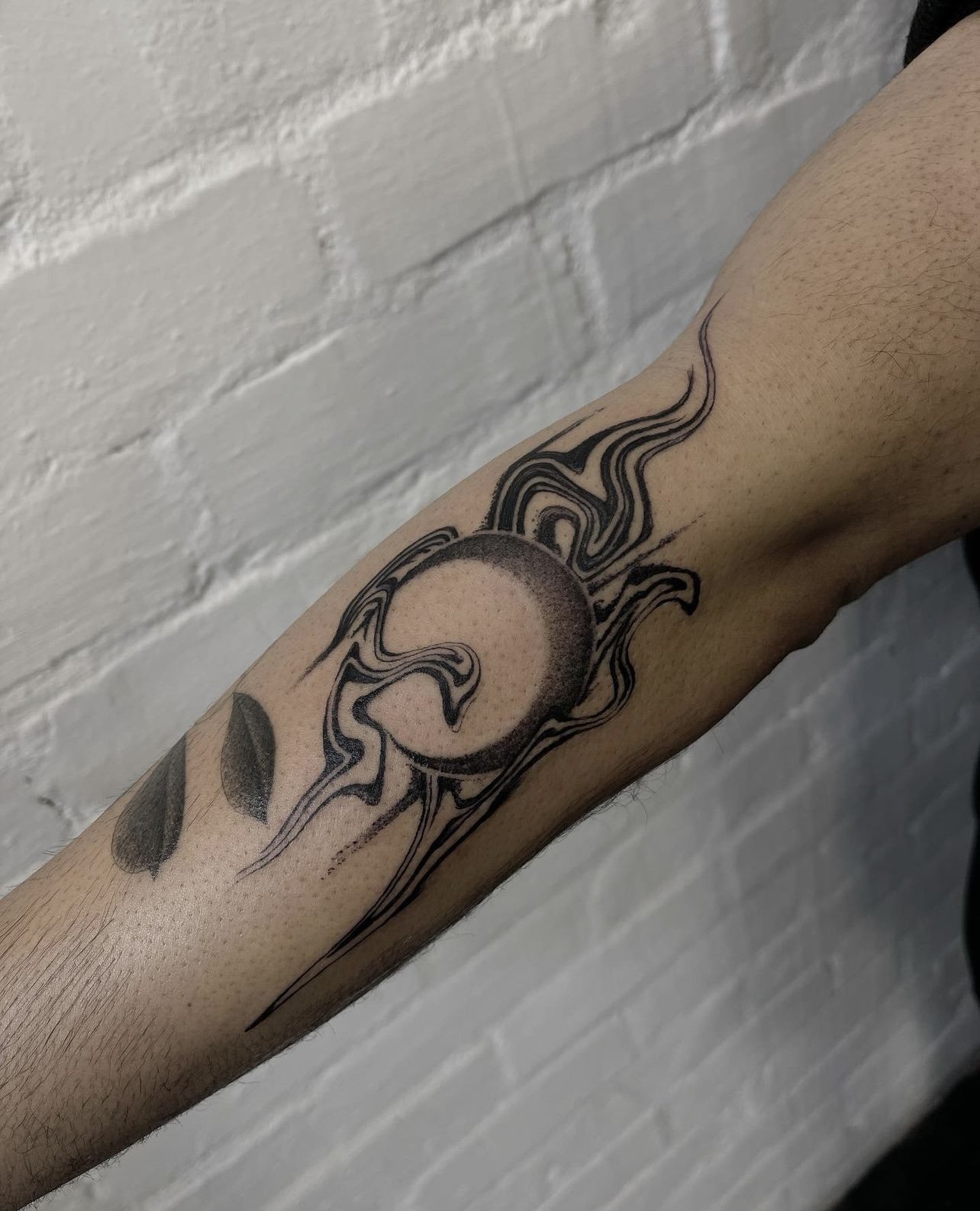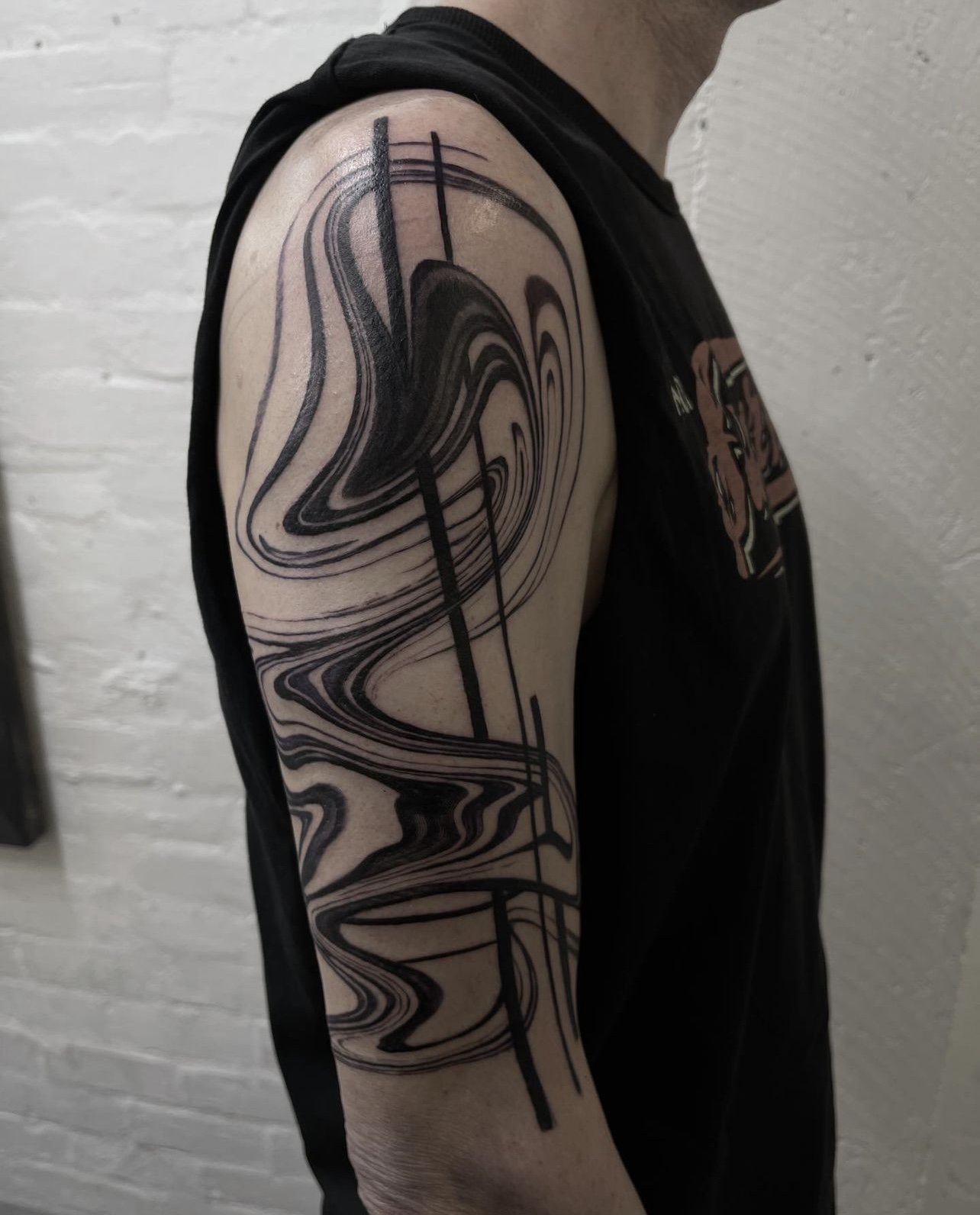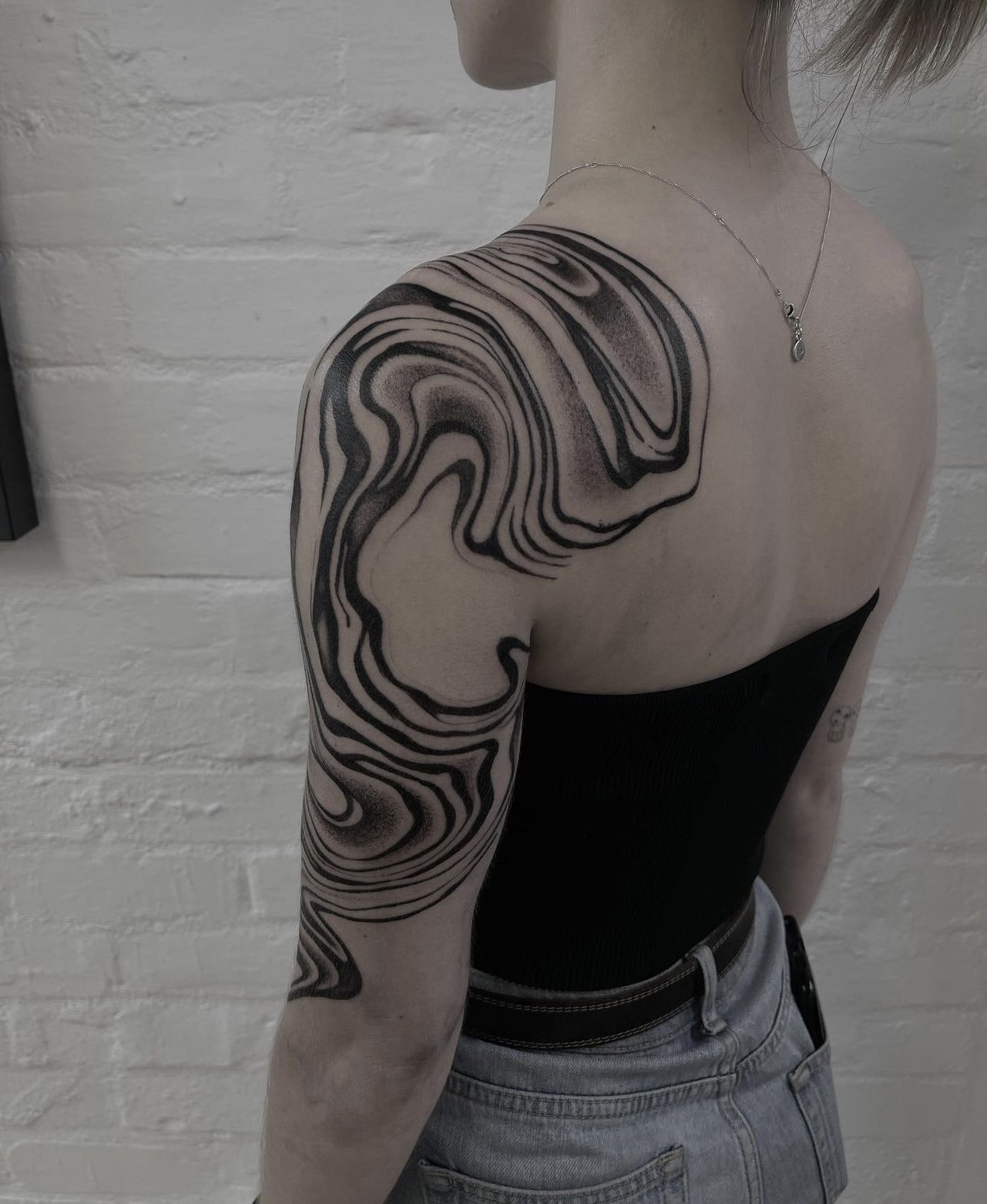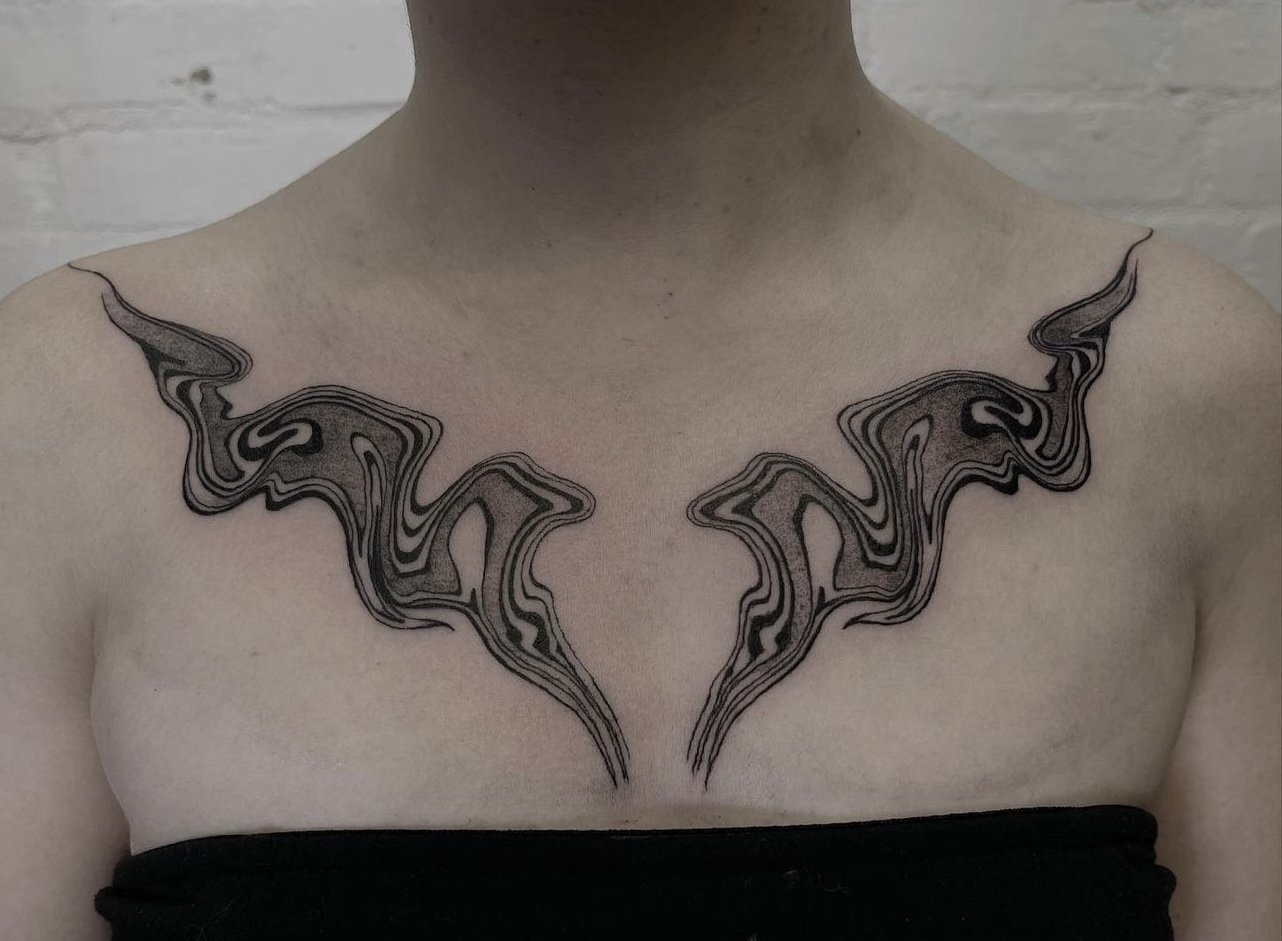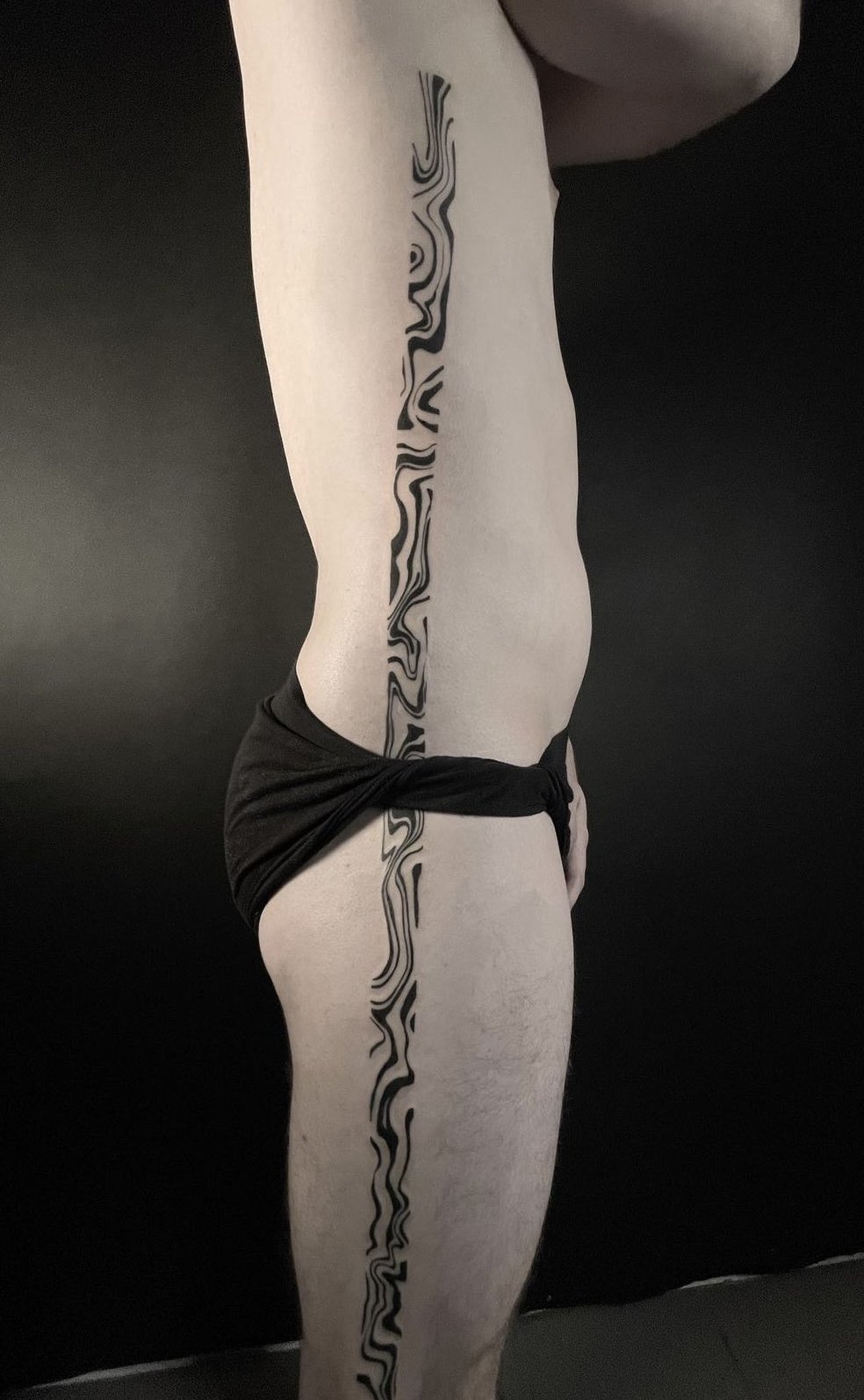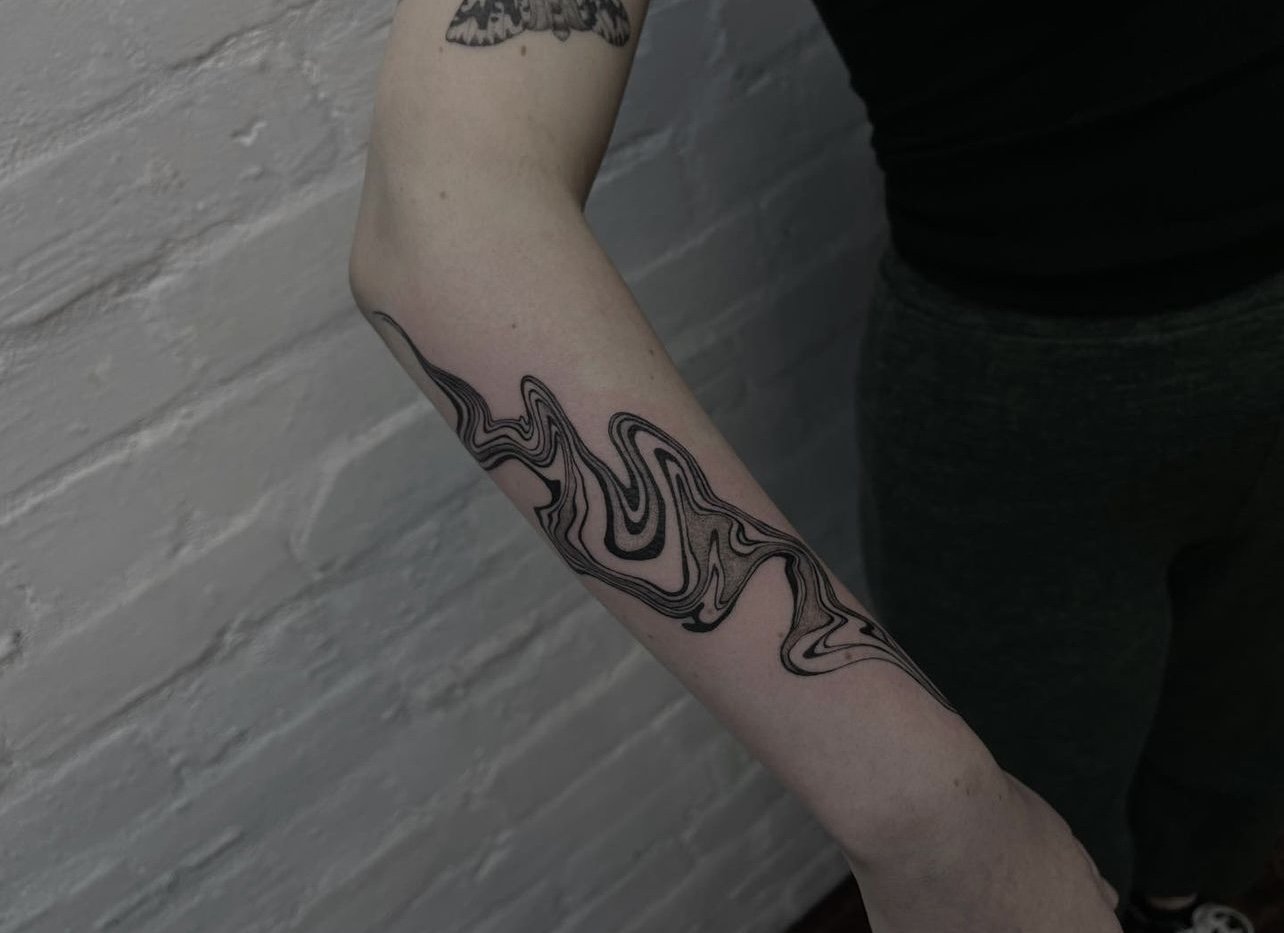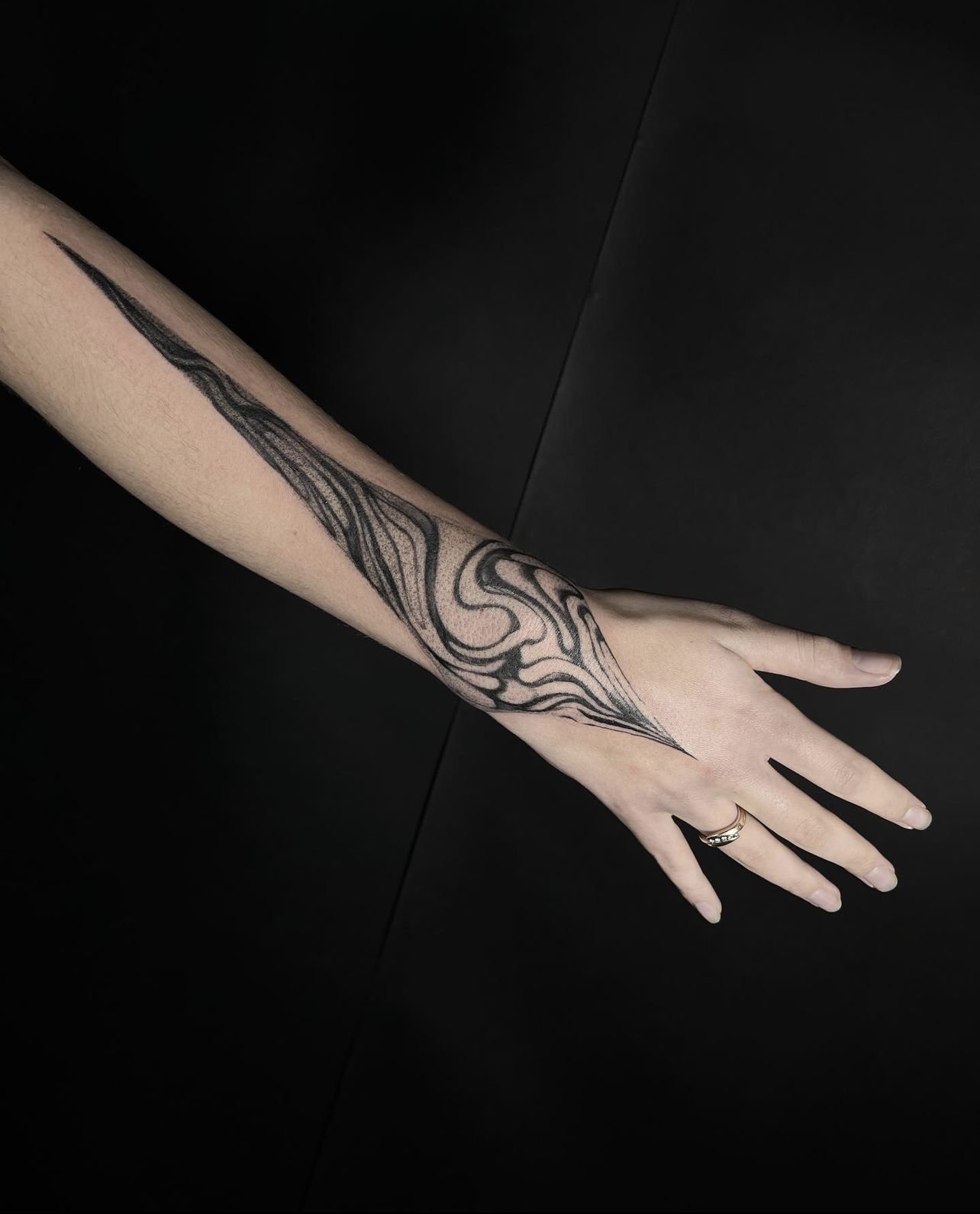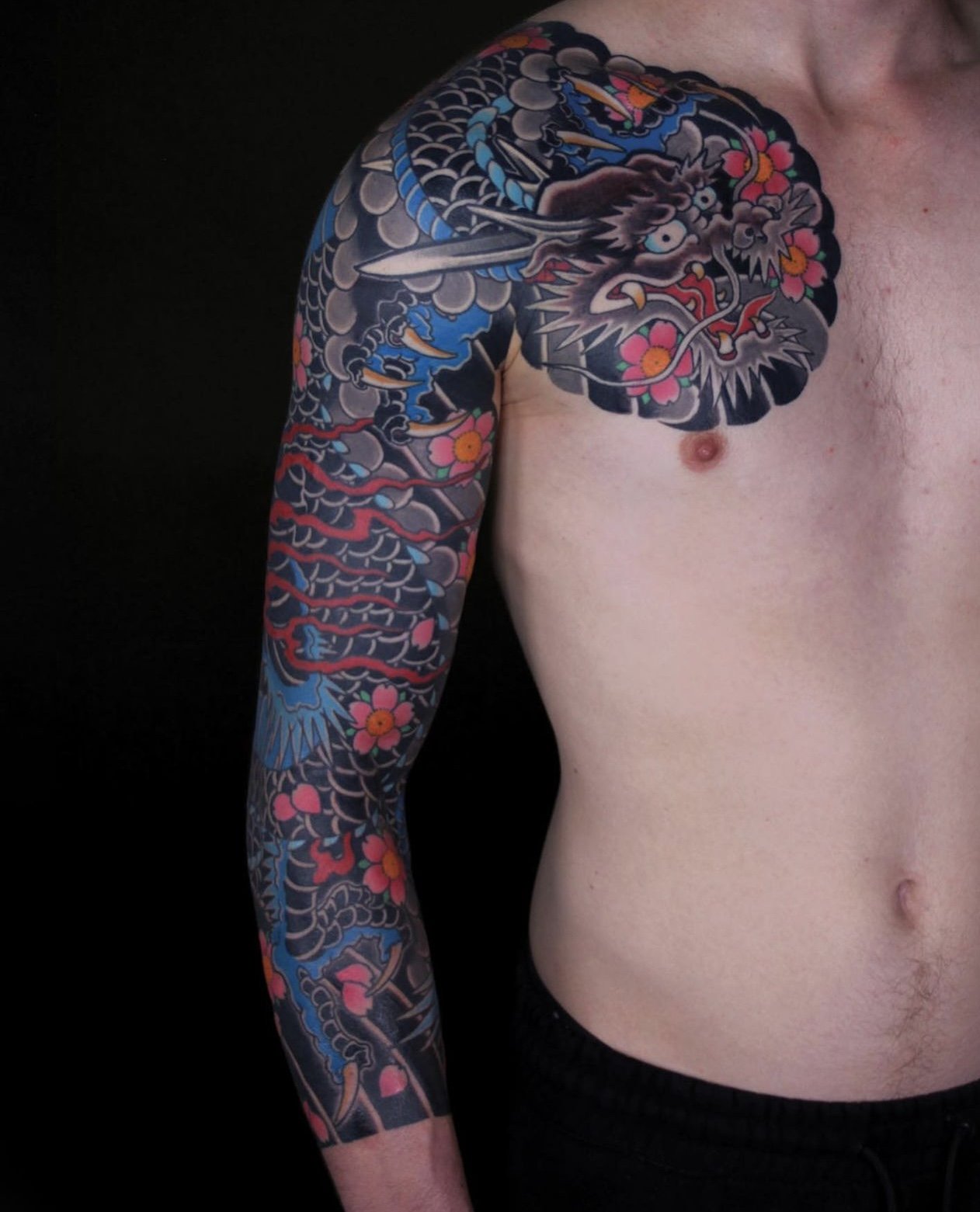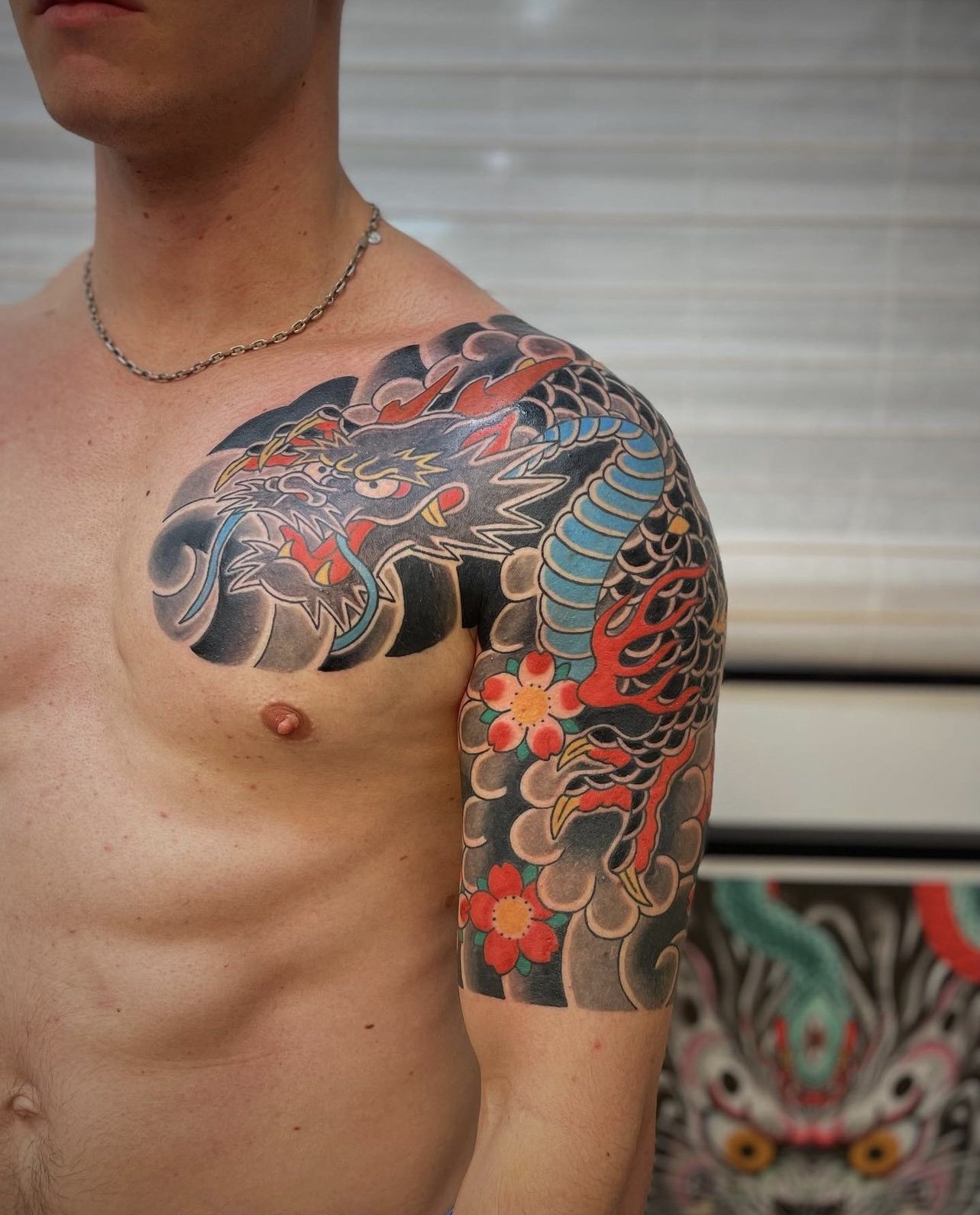A Kitsune is a legendary Japanese creature, shaped like a fox with magical shape-shifting qualities. It is one of the spiritual entities that belongs to Japanese mythology since the Heian period, but it is also known in other parts of Asia.
In some Japanese legends, Kitsune foxes develop human skills, learn to speak and can take on the human form of a woman or man. It is said that a Kitsune grows a new tail every 100 years, most commonly depicted with one, five, seven or nine tails. It is said that once a Kitsune develops nine tails it ascends to the heavens and transcends into the form of a celestial fox.
Kistune are symbols of intelligence and long life. They are notorious tricksters who are very sociable and derive pleasure from mimicking humans. They often take the form of a beautiful woman to lure in unsuspecting men, with the goal of finding a rich man to marry so they will be able to stay in their human form forever.


